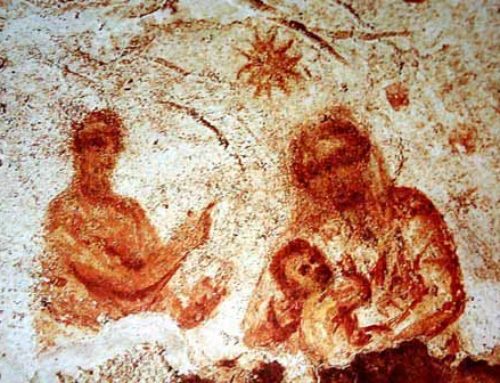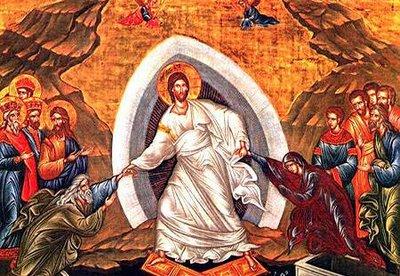When people who did not want to accept that Jesus had risen from the dead saw that the tomb where his body had been laid was empty, the first thing that occurred to them to think and say was that his body had been stolen (cf. Mt 28:11-15).
The marble tablet known as the “Nazareth Inscription”, bearing an imperial rescript ordering that tombs must be considered inviolable, may be taken as evidence of the commotion stirred up in Jerusalem by the disappearance of the body of someone from Nazareth around the year 30 AD.
However, the mere fact of finding the tomb empty would not stop someone from thinking that the body had been stolen. Despite this, it made such an impact on the holy women and the disciples who came to the tomb, that even before seeing Jesus alive again, they took their first steps towards realizing that he had risen from the dead.
St John’s Gospel tells exactly how they found everything. As soon as Peter and John heard Mary’s story, Peter and the other disciple set off and went to the tomb. “They both ran, but the other disciple outran Peter and reached the tomb first; and stooping to look in, he saw the linen cloth lying there, but he did not go in. Then Simon Peter came, following him, and went into the tomb; he saw the linen cloth lying, and the napkin, which had been on his head, not lying with the linen cloths but rolled up in a place by itself. Then the other disciple, who reached the tomb first, also went in, and he saw and believed” (Jn 20:3-8). The words used by the Evangelist to describe what Peter and he saw in the empty tomb vividly express the impact made on them by what they saw. To begin with, there was the surprise of finding the linen cloths there. If anyone had entered the tomb to make away with the body, would they have stopped to take off the linen cloths and left them, carrying away the body? It did not make sense. But on top of that, the cloth for the head was still “rolled up”, as it had been on Friday afternoon around Jesus’ head. The linen cloths were still lying as they had been placed, wrapped around Jesus’ body, but now they were wrapped around nothing, and lay flattened, empty, as though the body of Jesus had simply vanished away without disturbing them, passing through them.
There are still more surprising details to come.
When a body was prepared for burial, first the napkin was rolled around the head, and then the whole body including the head was wrapped in the linen cloths. John’s Gospel specifies that in the tomb the napkin was still “rolled up in a place by itself”, in other words still arranged in the same way as when Jesus’ body had been there. The Gospel narrates very precisely what astonished the two Apostles when they saw it. The absence of Jesus’ body was humanly inexplicable. It was not possible that someone had stolen it, since to remove it from the grave-cloths they would have had to unwind the linen cloths and shroud, and these would have been left unwound. But what the Apostles saw with their own eyes were the linen cloths and napkin exactly as they had been arranged when the Master’s body had been laid there on Friday afternoon. The only difference was that Jesus’ body was no longer inside them. Everything else was in the same place.
What they found in the empty tome was so clear that in some way the Apostles already intuited our Lord’s resurrection – “he saw and believed”.
Francisco Varo







Leave A Comment
You must be logged in to post a comment.